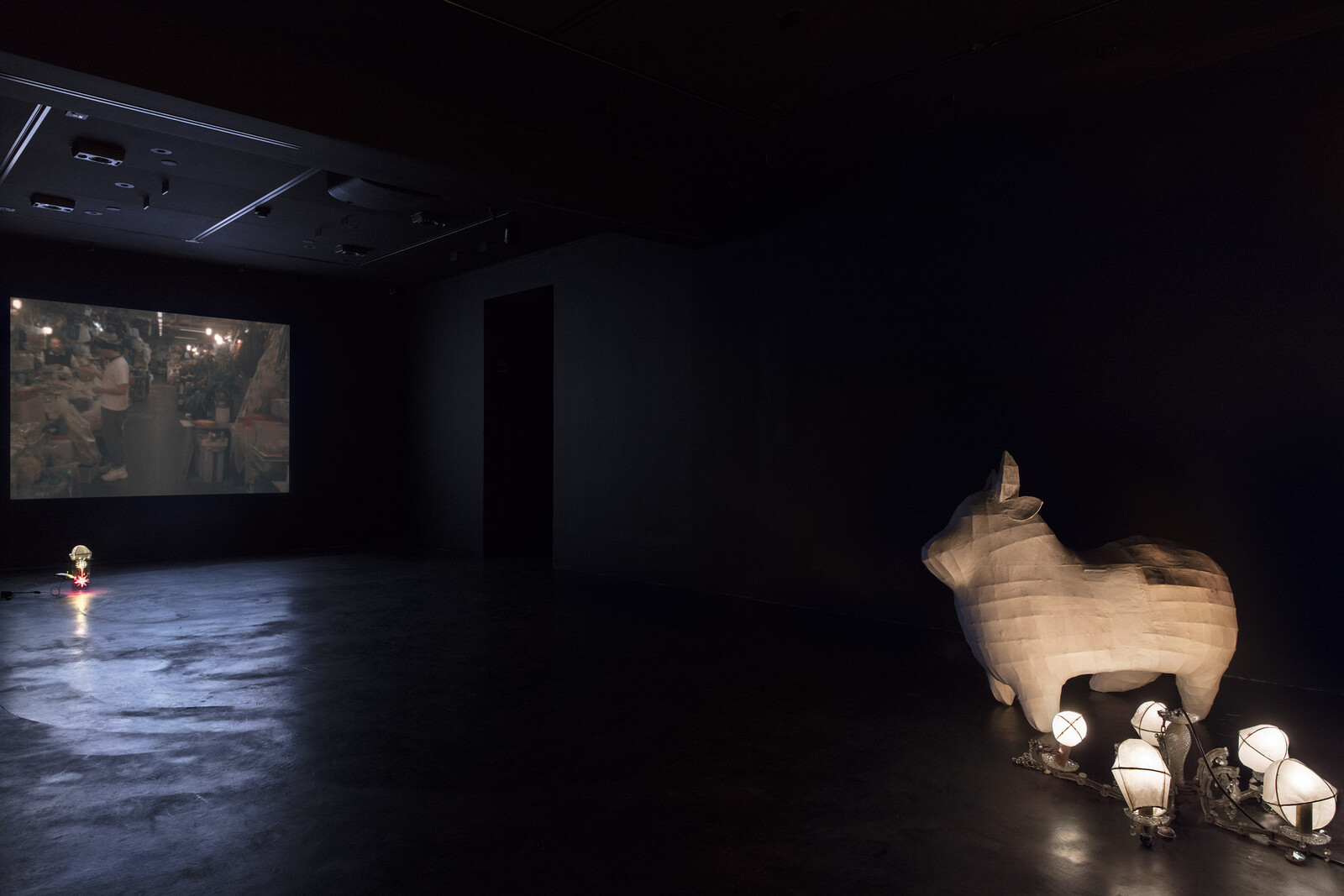Categories
Subjects
Authors
Artists
Venues
Locations
Calendar
Filter
Done
July 7, 2023 – Review
Jes Fan’s “Sites of Wounding: Chapter 1”
Wong Binghao

In one corner of Jes Fan’s latest exhibition is a glass globe that fits snugly into a receptacle resembling a half-opened, upright clam’s shell. Titled Left and right knee, grafted (all works 2023) and installed on a ledge in the curve of the staircase that leads down into the gallery, the sculpture’s treasure is only visible from above; from below, only its undulating, opal façade can be seen. The body parts and procedure referenced in the artwork’s title are hardly, if at all, discernible in the artwork’s form; an obtuseness compounded by its relatively inaccessible position in the exhibition space. Like the “pearl” it protects, this artwork reveals its meaning only in glimpses.
Indeed, even the exhibition’s figurative sources are hidden in plain sight: all of these seemingly abstract sculptures are cast from knees, chests, and torsos. Arranged in a vertical line, Left and right knees, three times is composed of six wall-mounted aqua resin basins, each approximately the same size and shape and spaced evenly apart. Despite the mathematical connotations of its title, the sculpture resembles an outlandish cascading fountain adorned with esoteric insignia. Fan mimicked an oyster shell’s palette by sanding various pigments—yellows, pinks, browns, and blues—onto aqua …
June 6, 2019 – Review
Cici Wu’s “Unfinished Return”
Leo Goldsmith

The “unfinished return” in the title of New York–based artist Cici Wu’s first solo exhibition in Hong Kong refers to a legendary incident in the city’s recent history. In August 2000, Yu Man Hon, a 15-year-old autistic boy, was separated from his mother in an MTR metro station in Kowloon. Somehow, the young man made it to a checkpoint at Hong Kong’s border with Shenzhen, where he was able to cross into Mainland Chinawithout identity documents. Once on the other side of the border, unable to make his way back to Hong Kong, Yu disappeared, never to be found.
For many, the story of Yu resonated as an allegory of Hong Kong’s relations with Mainland China in the early days following the handover of the former British colony to the People’s Republic of China in 1997. There is indeed the shocking indifference of the authorities, especially in dealing with the most vulnerable. But there is also the sense of loss, of blurred national and cultural identities, and of the border as a liminal zone where one’s very body might dissolve into evanescence. Revisiting the story some 20 years later, Wu’s exhibition ponders the cultural resonance of Yu’s ambiguous fate, even offering …